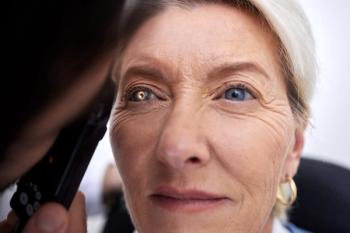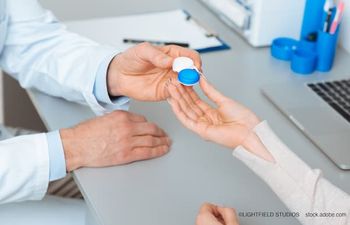
Deciding between glaucoma or physiologic cupping
Big optic nerves make me feel good. I find them easier to evaluate, and I don’t get as worked up about their respective big optic cups.
Big optic nerves make me feel good. I find them easier to evaluate, and I don’t get as worked up about their respective big optic cups. With that being said, I saw one of the biggest optic nerve heads I can recall in recent history a couple of months ago (see Figure 1). I measured it as being roughly 3 mm by 3 mm. I don’t typically quantify optic nerve sizes. Instead, I qualify them as being big, medium, or small. I made an exception, however, for this one. Now, let me tell you about the patient attached to this optic nerve.
Case presentation
A 64-year-old African-American male presented to be “checked for new glasses.” His medical history was remarkable for type 2 diabetes and hypertension, and both were controlled with metformin and hydrochlorothiazide, respectively. His family history was remarkable for glaucoma on his mother’s side and cataracts on both sides. His corrected visual acuity was 20/20 in each eye with +1.00 DS OD and +0.75 DS OS and a +2.00 D add. His
Not mutually exclusive diagnoses
I may be wrong, and I know we’re looking at Figure 1 in only two dimensions, but I think the superior aspect of his left optic nerve head looks as though there is hardly any rim tissue at all. This is possibly a variant on normal, as there seems to be ample room for the 1 million or so ganglion cell fibers to spread out thinly along the rim of this enormous optic nerve. However, I’m convinced that the retinal nerve fiber layer leading to the superior aspect of this optic nerve head has a subtle wedge defect in it as well (see Figure 3), and I cannot dismiss such a correlation of suspicions. In addition, the ISNT guideline is disobeyed.
So, given this evidence (in addition to the presence of ocular hypertension), do I think he has glaucoma or physiological cupping? I believe the answer is very likely both, and this case really made me think about how I tend to construe glaucoma and physiologic cupping as mutually exclusive diagnoses. With an optic nerve head that measures 3 mm, I’m sure there was a large cup to begin with, but I’ll bet that if I had access to the left optic nerve head 25 years ago, I’d see a little more rim tissue superiorly.
My efforts to attain previous optic nerve head photos have thus far been unsuccessful, but I did manage to reach an optometrist on the phone who had seen this patient before. He actually told me that he wanted to treat the patient for glaucoma and had discovered a visual field defect in the left eye. The patient never returned to him, either.
I’m worried about this patient because he is only 64 and in reasonably decent health. If the glaucoma that I suspect goes untreated for some time, he could really stand to lose significant vision. I have called him twice and sent him a certified letter. I also mentioned these findings in the letter to his primary-care physician stating that he had no diabetic retinopathy. I hope he decides to come back soon.
Optic nerves can look however they want to look, and differentiating variants on normal from the presence of disease is often challenging. However, dealing with the patients attached to these eyes is often the hardest and most troublesome part.
Newsletter
Want more insights like this? Subscribe to Optometry Times and get clinical pearls and practice tips delivered straight to your inbox.



















































.png)


